
Kód: 04687275
Intracellular Protein Degradation
Autor A. J. Rivett
This volume brings together a set of reviews that provide a summary of our current knowledge of the proteolytic machinery and of the pathways of protein breakdown of prokaryotic and eukaryotic cells. Intracellular protein degradat ... celý popis
- Jazyk:
 Angličtina
Angličtina - Väzba: Pevná
- Počet strán: 312
Nakladateľ: Elsevier Science, 1998
- Viac informácií o knihe

Mohlo by sa vám tiež páčiť
-

Lima's Red Hot Chilli in Arabic and English
13.92 € -

Discourse of Text Messaging
59.60 € -

Poetical Works: Volume 2. Paradise Regain'd; Samson Agonistes; Poems upon Several Occasions, both English and Latin
374.78 € -

Oxford Studies in Ancient Philosophy: Volume XIV, 1996
272.55 € -

Peacock Committee and UK Broadcasting Policy
70.87 € -

Sound of History
31.54 € -

Killed Strangely
36.97 €
Darčekový poukaz: Radosť zaručená
- Darujte poukaz v ľubovoľnej hodnote, a my sa postaráme o zvyšok.
- Poukaz sa vzťahuje na všetky produkty v našej ponuke.
- Elektronický poukaz si vytlačíte z e-mailu a môžete ho ihneď darovať.
- Platnosť poukazu je 12 mesiacov od dátumu vystavenia.
Viac informácií o knihe Intracellular Protein Degradation
Nákupom získate 580 bodov
 Anotácia knihy
Anotácia knihy
This volume brings together a set of reviews that provide a summary of our current knowledge of the proteolytic machinery and of the pathways of protein breakdown of prokaryotic and eukaryotic cells. Intracellular protein degradation is much more than just a mechanism for the removal of incorrectly folded or damaged proteins. Since many short-lived proteins have important regulatory functions, proteolysis makes a significant contribution to many cellular processes including cell cycle regulation and transcriptional control. In addition, limited proteolytic cleavage can provide a rapid and efficient mechanism of enzyme activation or inactivation in eukaryotic cells. In the first chapter, Maurizi provides an introduction to intracellular protein degradation, describes the structure and functions of bacterial ATP-dependent proteases, and explores the relationship between chaperone functions and protein degradation. Many of the principles also apply to eukaryotic cells, although the proteases involved are often not the same. Interestingly, homologues of one of the bacterial proteases, Ion protease, have been found in mitochondria in yeast and mammals, and homologues of proteasomes, which are found in all eukaryotic cells have been discovered in some eubacteria. Studies of proteolysis in yeast have contributed greatly to the elucidation of both lysosomal (vacuolar) and nonlysosomal proteolytic pathways in eukaryotic cells. Thumm and Wolf (chapter 2) describe studies that have elucidated the functions of proteasomes in nonlysosomal proteolysis and the contributions of lysosomal proteases to intracellular protein breakdown. Proteins can be selected for degradation by a variety of different mechanisms. The ubiquitin system is one complex and highly regulated mechanism by which eukaryotic proteins are targetted for degradation by proteosomes. In chapter 3, Wilkinson reviews the components and functions of the ubiquitin system and considers some of the known substrates for this pathway which include cell cycle and transcriptional regulators. The structure and functions of proteosomes and their regulatory components are described in the two subsequent chapters by Tanaka and Tanahashi and by Dubiel and Rechsteiner. Proteasomes were the first known example of threonine proteases. They are multisubunit complexes that, in addition to being responsible for the turnover of most short-lived nuclear and cytoplasmic protein, are also involved in antigen processing for presentation by the MHC class I pathway. Recent studies reviewed by McCracken and colleagues (chapter 6) lead to the exciting conclusion that some ER-associated proteins are degraded by cytosolic proteasomes. Lysosomes are responsible for the degradation of long-lived proteins and for the enhanced protein degradation observed under starvation conditions. In chapter 7 Knecht and colleagues review the lysosomal proteases and describe studies of the roles of lysosomes and the mechanisms for protein uptake into lysosomes. Methods of measuring the relative contribution of different proteolytic systems (e.g., ubiquitin-proteasome pathway, calcium-dependent proteases, lysosomes) to muscle protein degradation, and the conclusions from such studies, are reviewed by Attai and Taillinder in the following chapter. Finally, proteases play an important role in signaling apoptosis by catalyzing the limited cleavage of enzymes. Mason and Beyette review the role of the major players, caspases, which are both activated by and catalyze limited proteolysis, and also consider the involvement of other protoelytic enzymes in this pathway leading cell death.
 Parametre knihy
Parametre knihy
Zaradenie knihy Knihy po anglicky Mathematics & science Biology, life sciences Life sciences: general issues
234.86 €
- Celý názov: Intracellular Protein Degradation
- Autor: A. J. Rivett
- Jazyk:
 Angličtina
Angličtina - Väzba: Pevná
- Počet strán: 312
- EAN: 9780762303878
- ISBN: 0762303875
- ID: 04687275
- Nakladateľ: Elsevier Science
- Hmotnosť: 650 g
- Rozmery: 234 × 156 × 19 mm
- Dátum vydania: 07. August 1998
Obľúbené z iného súdka
-

Stealing Fire
16.17 € -21 % -

Brain Rules (Updated and Expanded)
16.58 € -4 % -

Book of Beautiful Questions
27.65 € -6 % -

The Extended Phenotype
12.90 € -19 % -

Evolution
28.87 € -8 % -

Sapiens
35.74 € -8 % -

Ways of Attending
26.11 € -

New Executive Brain
22.11 € -18 % -

The Molecule of More
16.48 € -23 % -

Sapiens
21.50 € -

Undoing Project
11.05 € -14 % -

Into the Magic Shop
17.91 € -8 % -

Brain
11.77 € -21 % -

It Was Snowing Butterflies
3.57 € -24 % -
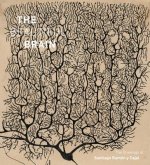
Beautiful Brain
40.55 € -20 % -

The Selfish Gene
12.28 € -23 % -

Power of Habit
12.08 € -24 % -

Cosmic Serpent
10.44 € -28 % -

Greatest Show on Earth
11.26 € -22 % -

Speculations on the Evolution of Human Intelligence
9.72 € -7 % -

Homo Deus
21.09 € -23 % -

Biology of Belief
17.71 € -23 % -

Story Genius
14.23 € -23 % -

Descartes' Error
14.43 € -23 % -

Life on Earth
27.44 € -23 % -

Reaching Down the Rabbit Hole
11.26 € -25 % -

Hidden History of the Human Race
14.02 € -19 % -

Science of Meditation
11.05 € -23 % -

Neuroaffective Picture Book 2
44.85 € -

Head Strong
24.06 € -16 % -
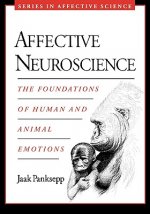
Affective Neuroscience
98.42 € -

Wisdom of Psychopaths
15.05 € -22 % -
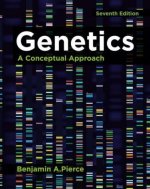
Genetics
102.93 € -

Kew Tropical Plant Identification Handbook, The
22.01 € -23 % -

The Storytelling Animal
16.79 € -18 % -

Brain's Way of Healing
12.28 € -23 % -

On the Origin of Species
10.13 € -22 % -

Ancestor's Tale
15.15 € -22 % -
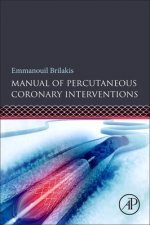
Manual of Percutaneous Coronary Interventions
100.57 € -10 % -

Incognito
17.91 € -8 % -

Incredible Unlikeliness of Being
14.43 € -23 % -

Plant Ecology
71.28 € -

Touch
12.28 € -23 % -

Masters of the Planet
16.17 € -21 % -

Future Humans
29.28 € -
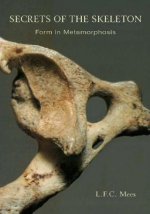
Secrets of the Skeleton
23.65 € -

Once We All Had Gills
44.85 € -

Zooarchaeology and Modern Human Origins
121.67 € -

Tree of Life
53.97 €
Osobný odber Bratislava a 2642 dalších
Copyright ©2008-24 najlacnejsie-knihy.sk Všetky práva vyhradenéSúkromieCookies



 21 miliónov titulov
21 miliónov titulov Vrátenie do mesiaca
Vrátenie do mesiaca 02/210 210 99 (8-15.30h)
02/210 210 99 (8-15.30h)